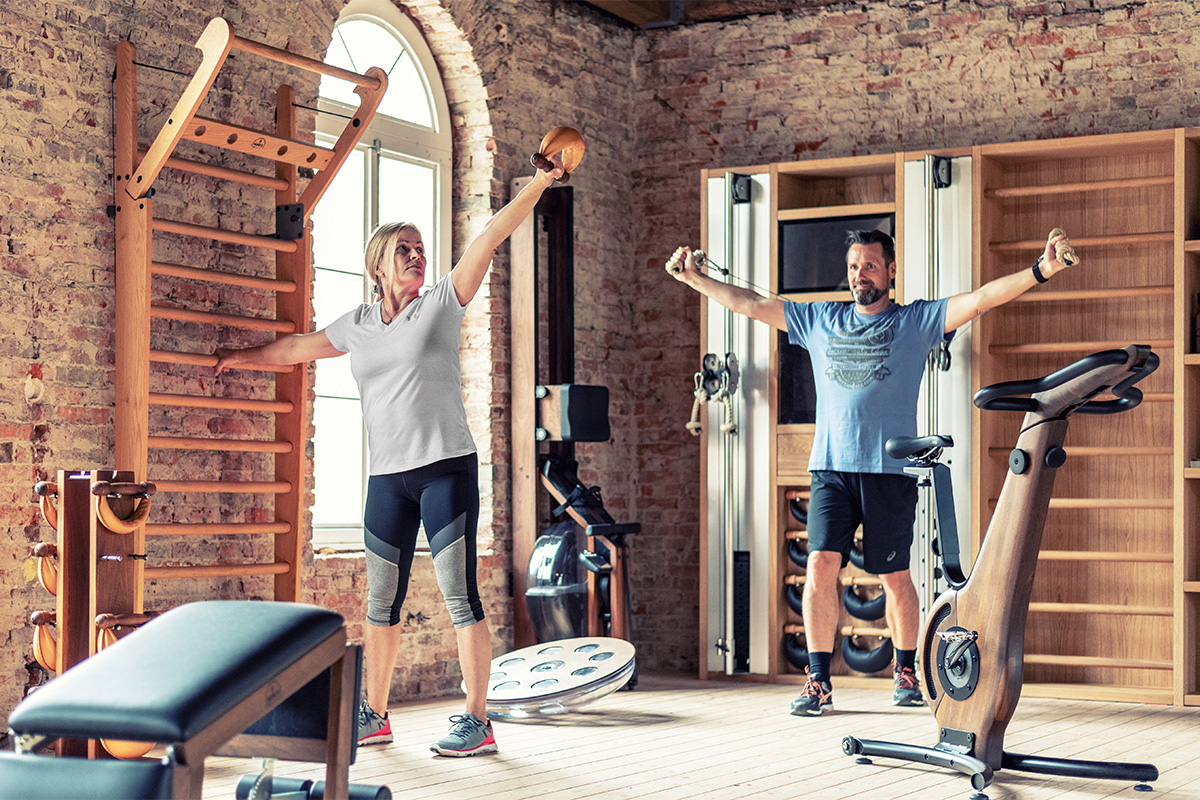
Have you ever felt out of sync, no matter whether it's morning or evening? Often, it’s not just about motivation, but about your circadian rhythm – your internal clock – not being in tune with your daily activities. The good news is: With a few simple strategies, you can reset your circadian rhythm and discover when your body performs at its best. This makes your workouts not only more effective but also more enjoyable.
What Is Your Circadian Rhythm, and Why Does It Matter for Your Workout?
Your circadian rhythm regulates many of your body’s functions – from your sleep-wake cycle to digestion and energy levels. Factors like sunlight, eating habits, and physical activity directly impact this rhythm. If you often feel sluggish at certain times of the day, it could be a sign that your circadian rhythm is out of balance. By aligning your workouts with your body’s natural rhythm, you can enhance both your fitness and overall well-being.
Step 1: Establish a Regular Sleep-Wake Cycle
The first step to optimizing your circadian rhythm is to maintain a consistent sleep schedule. Going to bed and waking up at the same time every day helps your body get into a routine. This consistency leads to feeling more alert and energetic during the day, which positively affects your workouts.
Tip: Start your day with a short, energizing workout. The WaterRower is perfect for an effective morning routine. This low-impact exercise not only wakes up your body but also releases endorphins to kickstart your day on a positive note.
Step 2: Leverage Natural Light
Light is one of the strongest regulators of your circadian rhythm. In the morning, try to get as much natural light as possible to activate your body. In the evening, reduce your exposure to artificial light to help your body wind down and prepare for restful sleep.
- Morning: A brief walk outside or a cardio workout with the NOHRD Sprintbok near an open window can get your blood flowing and boost your energy.
- Evening: Avoid bright screens in the evening. Instead, try a calming stretching routine on the NOHRD TriaTrainer to help you relax and prepare for bed.
Step 3: Integrate Movement into Your Daily Routine
Even if you don’t feel ready for an intense workout, you can start with small, manageable movement breaks throughout your day. These short exercises will stimulate your circulation, boost your energy, and prepare you for more challenging workouts later on.
- Micro-Workouts: Begin with five- to ten-minute sessions using the NOHRD SwingBells or SlimBeam. These compact workouts are perfect for easing into a regular fitness routine.
Step 4: Focus on Your Nutrition
Your diet plays a big role in your circadian rhythm. A balanced breakfast jumpstarts your metabolism and gives you the energy you need for your workouts. On the other hand, heavy meals in the evening can disrupt your sleep and throw your rhythm off balance.
Tip: Incorporate bodyweight exercises, such as those done on the NOHRD WallBars, and pair them with a nutrient-rich diet to maximize your performance and support your circadian rhythm.
Step 5: Manage Stress with Mindfulness
Stress can disrupt your circadian rhythm and leave you feeling drained. Mindfulness practices like meditation and breathing exercises can help you reduce stress and restore balance. A calm mind supports a healthy rhythm and improves your workout efficiency.
Tip: After a long day, an easy session on the NOHRD Bike can help you clear your mind and leave the stress of the day behind.
Step 6: Experiment with Your Workout Timing
There’s no one-size-fits-all perfect time for exercise. Everyone’s body is different. Experiment with different times of the day to discover when you’re at your peak performance. You might find that you have more energy in the morning or that working out in the evening helps you unwind.
Tip: NOHRD equipment offers the flexibility to train whenever it suits you best – whether that’s early in the morning or late at night. Try different times and find out what works best for you.
Step 7: Supplement Support
If your circadian rhythm still feels off despite your best efforts, supplements like magnesium or vitamin D might be helpful. However, it’s important to consult with a healthcare professional before adding any supplements to your routine.
Conclusion: Train Smarter by Aligning with Your Circadian Rhythm
Feeling unmotivated to train from time to time is perfectly normal. The key is to optimize your circadian rhythm and listen to your body. With small adjustments to your daily routine, diet, and workouts, you can find out when you’re at your best. NOHRD equipment supports you in training flexibly and in sync with your body’s natural rhythm, helping you achieve your fitness goals sustainably.
Learn More: Visit our NOHRD Training Pages to discover how to optimize your workouts and maximize your performance by aligning with your circadian rhythm.
